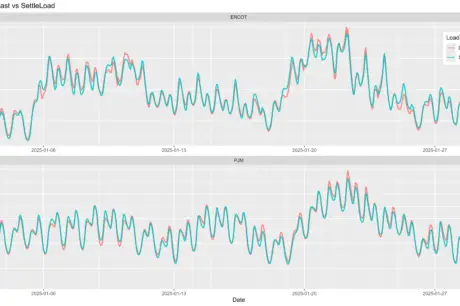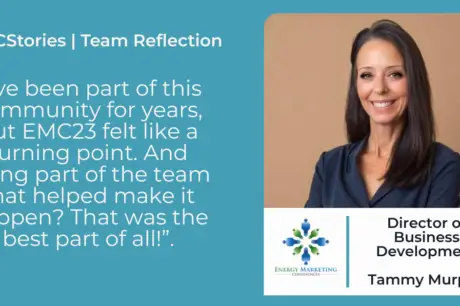The retail energy market is undergoing rapid transformation, driven by technological advancements, regulatory changes, and fluctuating energy prices. For retail energy providers, this volatility presents both challenges and opportunities.
But to stay competitive in an ever-evolving landscape, energy providers must first and foremost adopt strategies to meet and exceed shifting consumer preferences and expectations.
A crucial issue to address, as according to the latest research from J.D. Power 2023 Electric Utility Business Customer Satisfaction Study,SM customer satisfaction is falling flat, with overall business customer satisfaction with energy providers and utilities falling to an all-time low, the result of a combination of steadily rising prices and a perceived lack of concern for their needs, support and engagement.
In Texas specifically, rising costs and an overall decline in brand trust has prompted nearly half of all Texas retail energy provider (REP) customers’ plans to shop around for a new REP in the next year. That’s according to the Cogent Syndicated Texas REP Trusted Brand™ study from Escalent, which found brand trust has sunk to the lowest levels in the last seven years, on par with phone and cable TV companies.
So what can REPs do to stem the bleeding and turn the tide towards building back better customer value?
Here, we’ll delve into a three-pronged approach, including: a deeper understanding of the clientele profile retail energy serves, flexible pricing options, and organizational agility.
Knowing Your Clients
To provide value, REPs first need to understand who their customers are, what they want, and how their needs are changing.
The foundation of understanding those customers lies in data management, specifically, a robust data warehouse that stores end customer and market data, arming companies with the power to identify trends and customer behavior and, in turn, better tailor services to meet their customers’ unique set of needs.
According to an EY survey, formerly passive energy consumers are now becoming more engaged in their energy matters, with interest in usage monitoring, environmental impacts, and new energy products and services taking higher priority than ever before, giving way to a more active “omnisumer” type customer more apt to participate in the energy ecosystem across a multitude of places, solutions and providers.
Along with the new wave of more savvy energy customers and consumers comes a heightened demand for simpler, yet more sophisticated, end-to-end experiences and engagement. With a plethora of energy suppliers to choose from, competition for customers is at an all-time high, which means competing on price alone isn’t enough to attain and retain a strong customer base.
Flexible Pricing Options
With prices on the rise, soaring bills have led to sinking customer service/billing satisfaction. And with so many alternative options to choose from, energy customers aren’t shy about expressing their desire to jump ship to a lower cost provider — which means quick-hit sign-up incentives aren’t enough to keep customers around long term, as value isn’t solely determined by the customer’s monthly bill amount.
Providing customers with ongoing value, like highlighting offerings and programs that consistently assist customers in optimizing usage, enhancing efficiency, and cutting costs can dramatically heighten perceptions of value and overall trust. Even if the savings are modest, the perception that a retailer is actively helping customers save adds significant value.
By providing customers with programs that reduce energy consumption, manage usage, and enhance their energy literacy, REPs can build a reputation as a top service provider and differentiate themselves as leaders in industry innovation.
Additionally, pricing flexibility, like configurable rate products and customized pricing options, present another layer of added value REPs can pass on to their customers as they they’re more attune to whether the changes in the market to meet the needs of individual residential customers and large industrial customers alike.
Agility
Agility is critical to successful transformation, yet according to the EY Digital Transformation and the Workforce Survey, nearly all energy providers say the speed at which their organization can move and adjust is a challenge. A major problem, retail energy experts say, as navigating the oftentimes volatile and turbulent market means those who can’t adapt won’t survive, much less thrive, in the energy transition ahead.
And implementing an agile approach shouldn’t just be relegated to call centers or back offices, it should be embedded company wide, throughout marketing and sales, energy solutions, field services, and IT – as one of the best ways to prepare for shifts in the retail energy landscape is to ensure that all aspects of the business are streamlined and efficient.
Key Takeaways:
The retail energy market’s turbulence underscores the urgency for REPs to innovate and adapt. As customer satisfaction wanes and trust in brands diminishes, energy providers must recalibrate to reconnect with their customers. Through a deeper understanding of customer profiles via advanced data management, flexible and personalized pricing options, and organizational agility, energy providers are better suited to meet the needs of today’s more engaged and energy-aware consumers.
Embracing these strategies not only addresses immediate concerns but also positions providers for long-term success in a volatile market, as those who navigate the transformation with insight and agility will emerge not just as survivors, but as innovative leaders in a reshaped energy landscape, turning challenges into opportunities for meaningful customer engagement and sustained customer value.
By: Andreya Shaak, Senior Vice President, Product Strategy & Product Management for VertexOne












